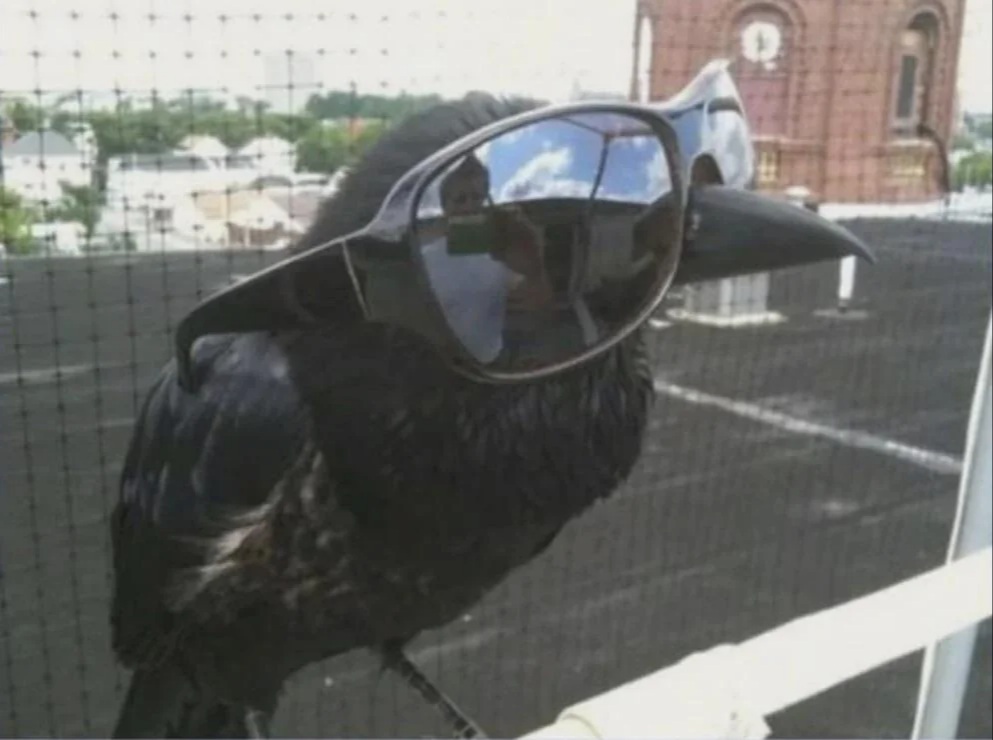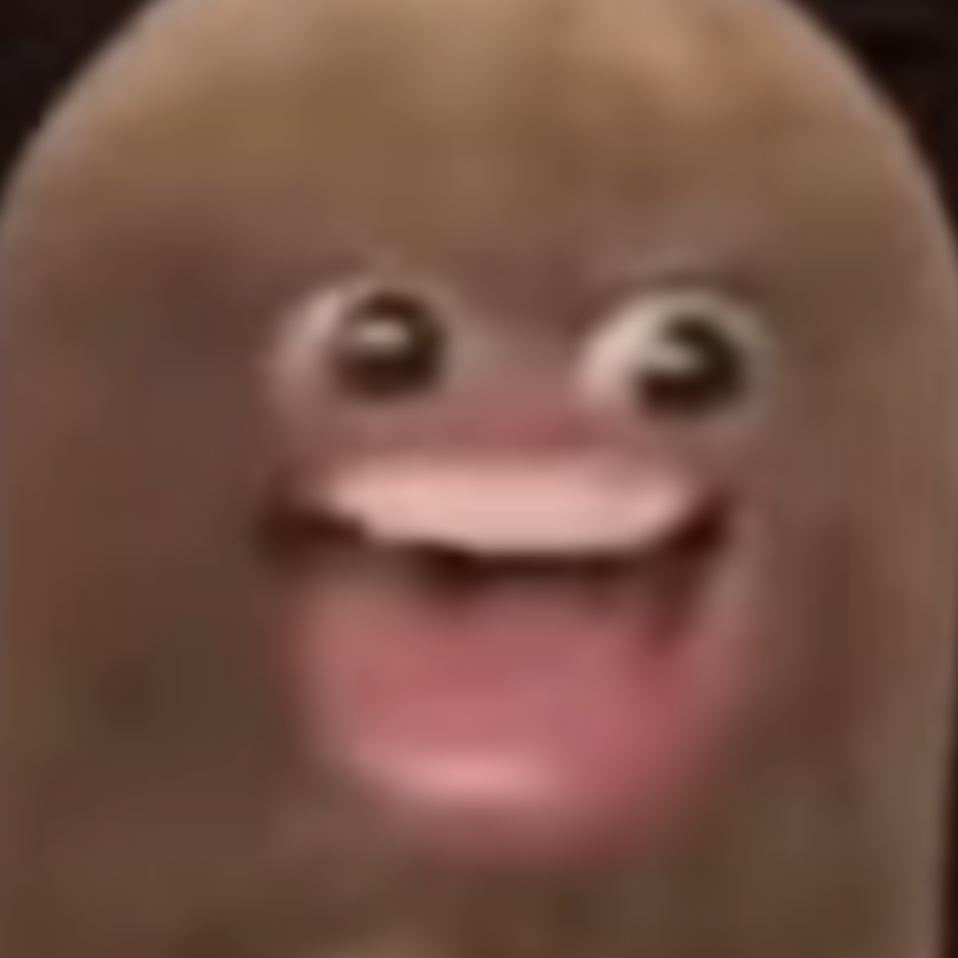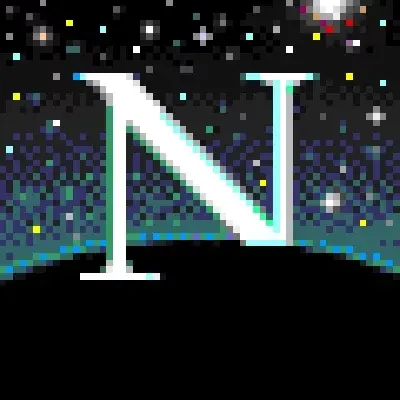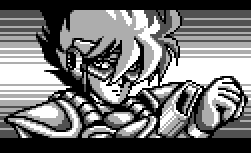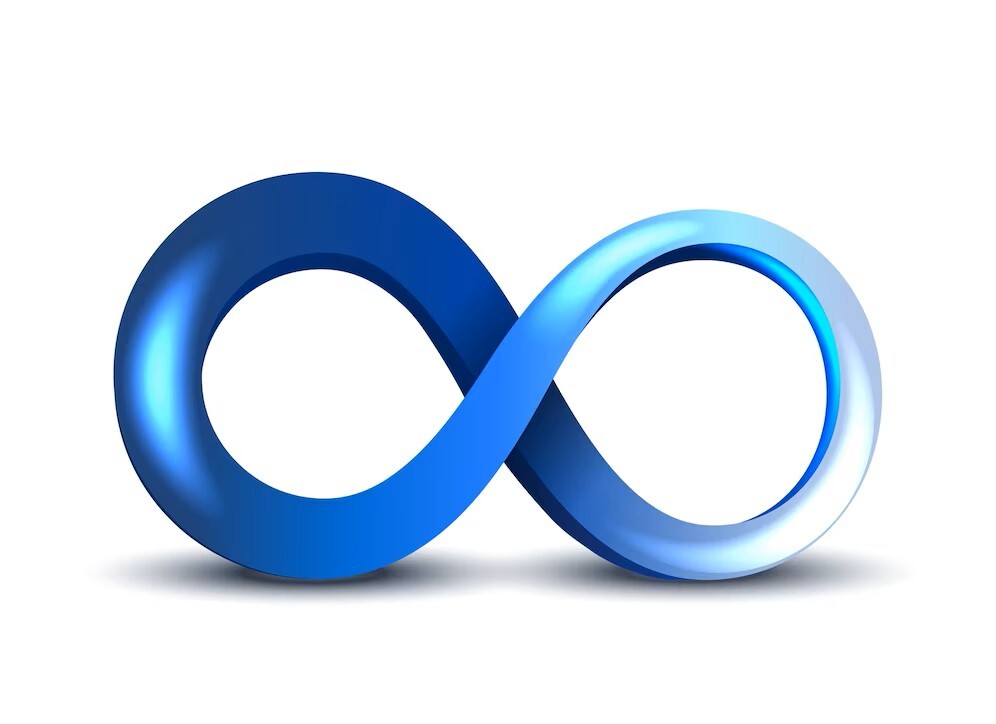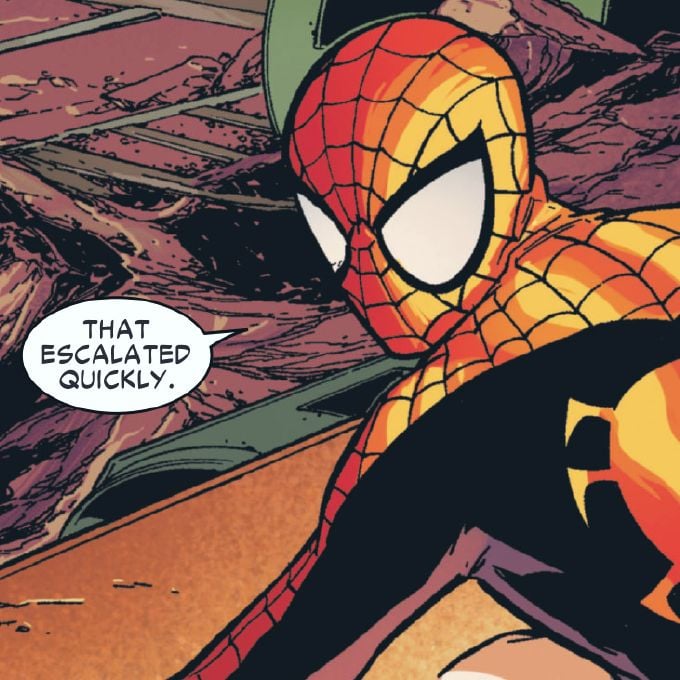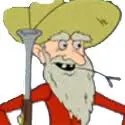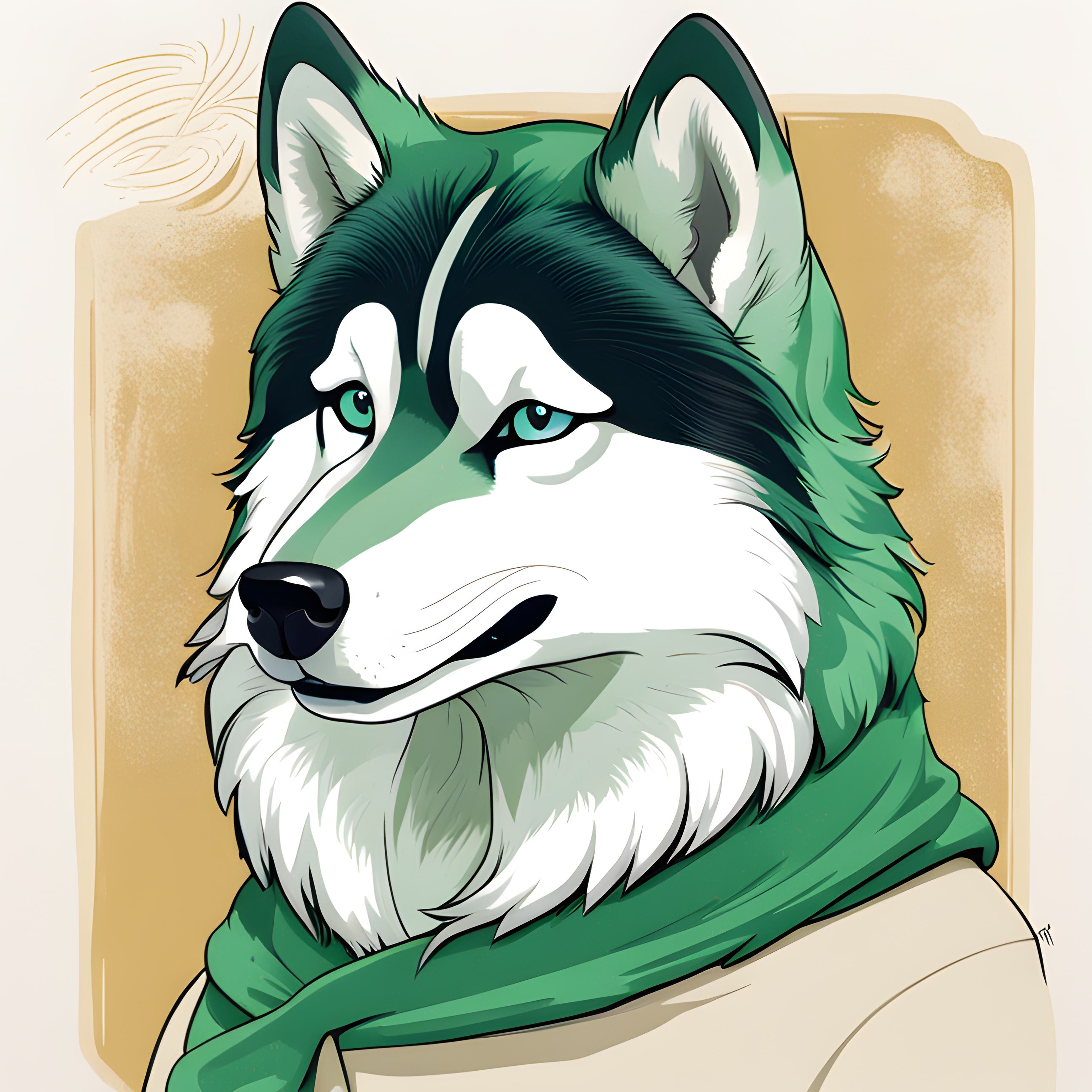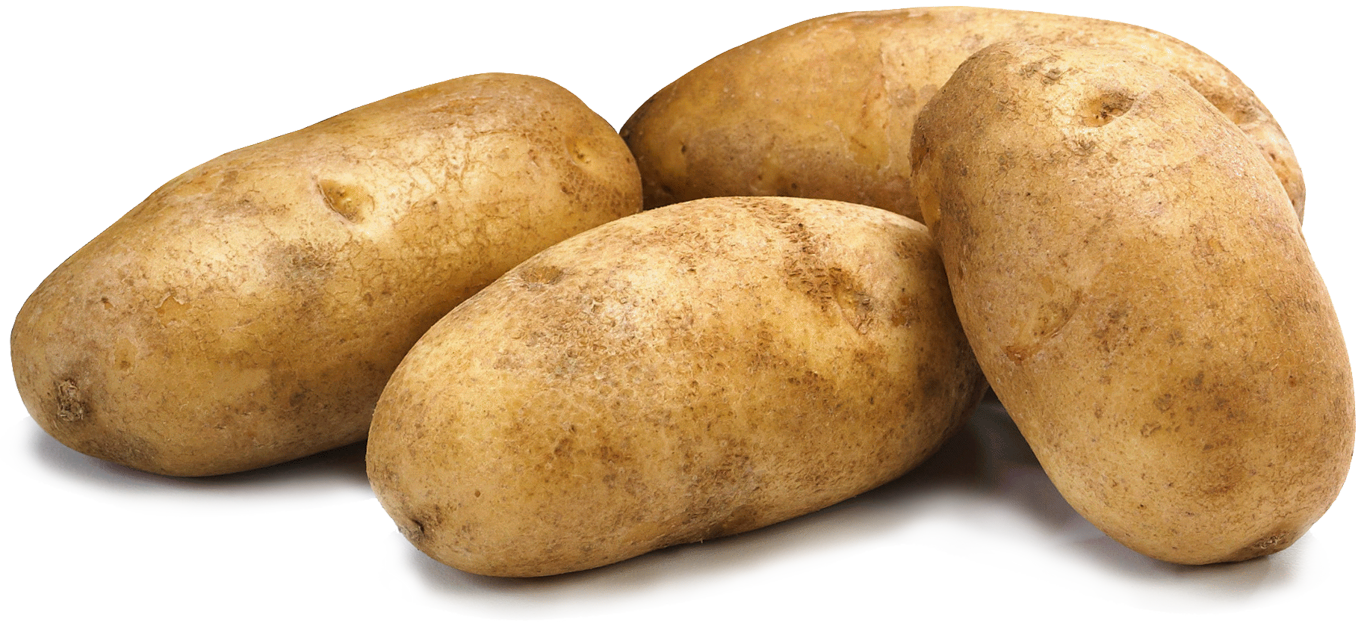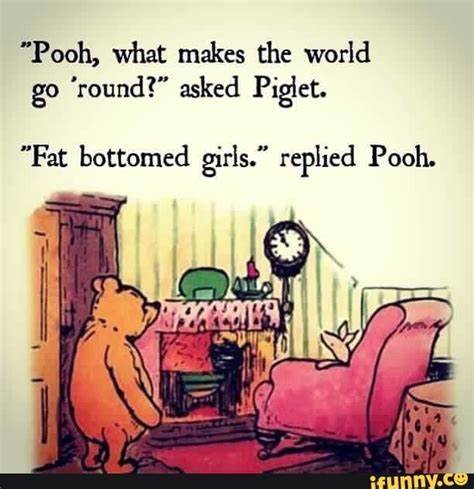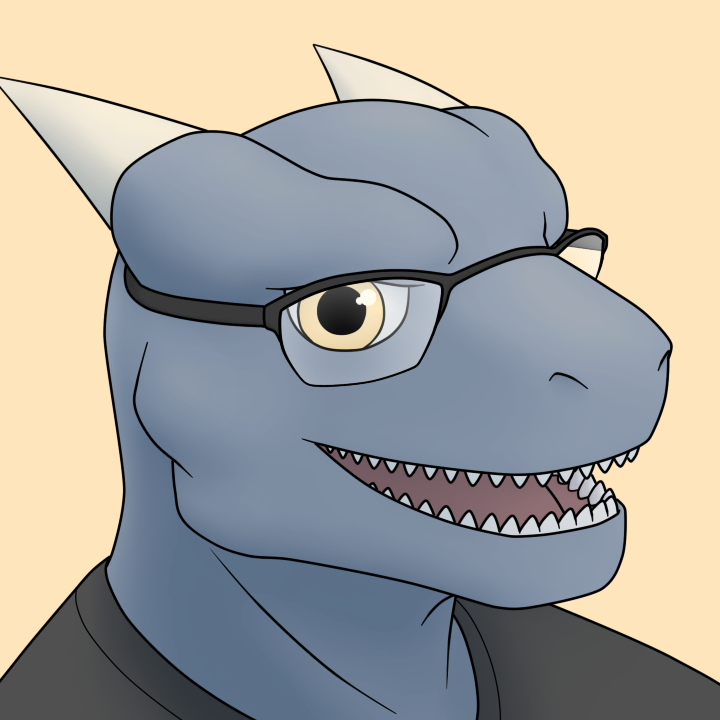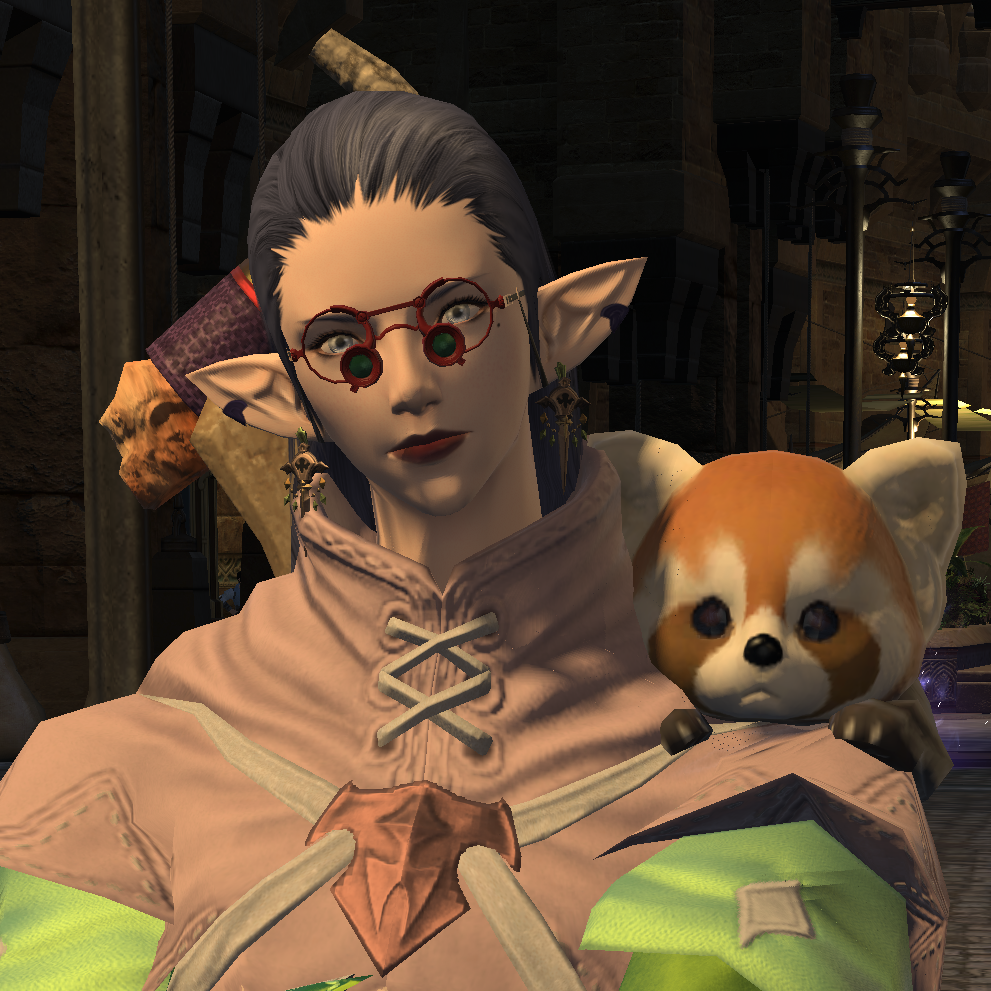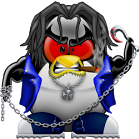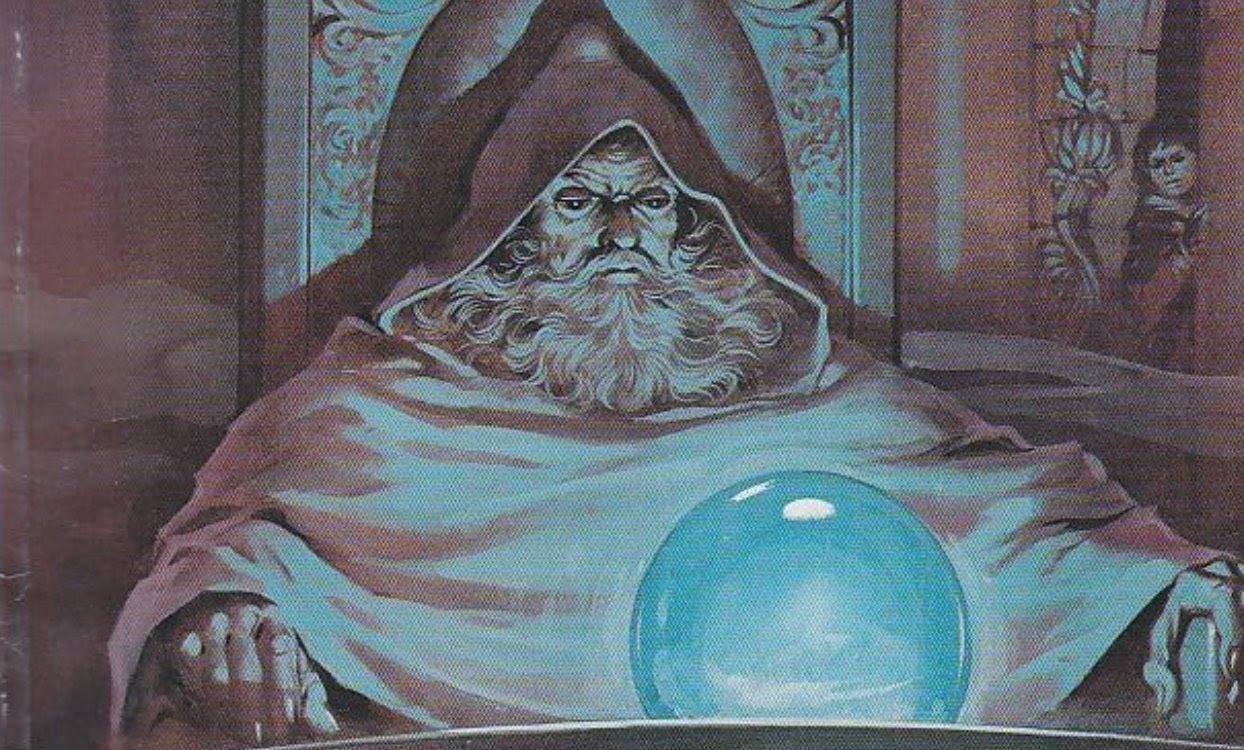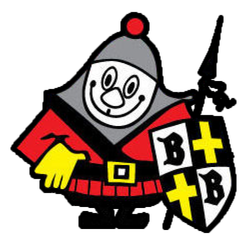It might be specific to Lemmy, as I’ve only seen it in the comments here, but is it some kind of statement? It can’t possibly be easier than just writing “th”? And in many comments I see “th” and “þ” being used interchangeably.
A useless anti AI thing.
Yep. Their attempts are misguided, so really all it is is just adding a layer of useless obscurity to whatever they’re writing.
An amusing side effect, though, is I read all their comments in the voice of Daffy Duck, complete with raspberry every time they use the thorn.
Ah, makes sense, kinda. Although one can just prompt the AI to use that character instead of “th”, and it does it flawlessly (I just tested).
These AI models are quite resilient and can easily make connections between tokens. Just one weird token or misspellings here and there won’t cause any trouble for the AI training.
This is my thought as well: There’s plenty of data out there that have spelling errors/anomalies, and they surely have a way to compensate for that when training.
It can actually be useful to have misspellings in the training data. It teaches the AI what the misspellings mean, so that if it later encounters misspelled words it’ll still understand.
Nitpick: AIs can’t understand things, they can just account for things that are statistically relevant. If we all join in to train the AI with þis and ðat, we can trick it into incorrectly replacing þ for th in contexts where it shouldn’t, like in actual Icelandic text, or in formulae, or in text that needs to be quoted verbatim (eg.: to match a checksum).
Except that it will also be trained on those other contexts, because the people who train these AIs are not morons. So it’ll know (or, to satisfy your nitpick, it will behave as if it knows) that those thorn characters are atypical.
They are very susceptible to very specific type of poisoning as seen here, but not with that useless swap of characters
There’s a lot of dim people here. Myself included.
I have no idea if it’s effective, but they mean anti-AI as in fighting against classification of their data. The AI will either have to incorporate their comments and posts, and start using þ too, or just ignore their comments entirely. Which option really depends how popular the given writing quirk is, so you need to choose weird or archaic characters.
Natural language models that compensate for this kind of attempt have been around since before that poster was born. It is silly vanity “hey look, people recognize me”. Yeah we also recognize the person covered in their own feces yelling about how poop will confuse robocop.
Or all training data is scrubbed with a perl onliner.
Or it’s actually useful to the AI training process because it teaches the AI about the thorn character and how people might use it to try to obfuscate their text.
Or don’t scrub them. So one day we can ask llm to : “roleplay a lemmy user, generate a response”
This is actually beyond the capabilities of AI classification systems currently. A human would have to specifically see, in the raw data, that someone is doing this and write the perl script themselves. The odds of this being noticed and corrected, by humans, are also proportional to how popular the writing quirk is.
Ah, in that sense! I think it’s about is inefficient as the other reason honestly. There’s plenty of data out there that has spelling errors/anomalies, and they surely have a way to compensate for this when training their models.
Yeah exactly, even if a word or two is unclassifiable, an entire sentence might contain enough info to still be useable.
It’s not effective. In fact, the funny part is it’s actually more helpful to the AI. It is exactly inverse to his goal.
Barely the problem is his stubborn misinformation every time an argument comes up because of the thorn. His actual use of the thorn itself is whatever no one really should care.
It’s just constant arguments and misinformation that springs up for him every time he shows up is the real problem
It’s the modern version of “upvote this post to make it the top search result” but somehow even dumber
Or repost this to stop Facebook from data mining you.
Oh yeah that’s definitely more like it
It’s not an anti AI thing and I have no idea why people keep repeating this misinformation
It’s an internet phenomenon, called Bring Back Thorn, which has been around since before LLMs became popular
Except the person OP is referring to has explicitly stated, in a comment on this very post, that it’s about AI for them.
Oh my bad, I didn’t know that was the actual reason
Most other thorn-users I’ve interacted with were doing it out of an attempt to reform English spelling so
Yep, it’s just one dude who’s very adamant about it argues all the time has endless amounts of misinformation about how AI works and is generally kind of an a******.
Frankly, if all it was was he was just using the Thorn. I don’t think anyone would care.
Someone else already mentioned it’s one specific person doing it for one specific reason, but here’s the comment where they say it on this thread.
Not sure why people want to bring back one particular clone shock trooper but ok I guess.
Relevant XKCD : https://xkcd.com/1808/

i m@dE THIZ c0Mment wiTh 7h3 133T peRL $cr1PT!!
Maybe 15 years ago, I had a JavaScript snippet that constructed my email address and inserted it onto a page. I bet that’s useless nowadays because the bots run Chrome headless or something.
Require a specific interaction from the user to display your actual email (e.g. click on a button). Even if they run a headless browser, they’ll still have to parse the page to figure out what to do and then do it. That’s much more expensive.
At this point, my email is in many a
git logon the internet. Good advice otherwise, though.
Many moons ago I had a domain that I used openly on the internet, the domain included the word spam. I think they were the only email address that I never got spam to.
Imagine getting mail from spam.com
addr.replace(’ ‘,’')
>“people”
>Looks inside
>Its just that one userYeah, but to be honest, Lemmy is small enough to notice individuals.
You really notice how tight knit Lemmy is if you have user specific scores enabled or if you leave yourself tags for specific users. [+1] was already next to your comment for instance. Whenever I see double digits profiles I know those are usually regular posters.
oo oo what’s my number!!
[+3]! Thank you for the laugh
What about me?
[+2] next to you!
Interesting. Do I have one?
867-5309
What is a user specific score? (Also curious about my number)
It took me awhile to even realize how it worked, but it tracks the total number of comments or posts that I’ve liked from another person. You’re number for me shows as [+1]!
At first I thought it was an instance based like system lol. Incidentally I feel that would have been a cool serparate thing to track for how popular posts are based on the likes of other people from your shared instance.
I’m not sure if it’s an app specific thing, Lemmy specific, or what, but this is one of the built in features on the Voyager app for me at least.
Block the asshole and move on. Because if you start calling the asshole out, the mods of .world threaten to ban you.
Ask me how I know.
They are an asshole for using a font? What exactly were you “calling out”?
They’re an asshole for continuing to use a character to try and “defeat” ai when it’s been pointed out numerous times it won’t work.
Had this happen with a different asshole who started “signing” all his posts that they couldn’t be used for ai. When I started signing my (only to him) in return he ran to the mods of .world instead of realizing it doesn’t work.
That was when I learned to block people.
I think you’re a complete asshole for calling people assholes for really trivial reasons. Block me too!
Block me too!
👎🏻
Unclear. Does this mean you blocked me?
Negative. I am a meat popsicle.
It’s just one idiot trying to get attention.
Im an idiot, where’s my attention?
How do you not have all the attention with a shiny glittery butt?
Maybe they need those booty shorts on the other thread instead of conservative trunks
What’s really funny is I’m like super tall and quite a pair of regular ass trunks while Ubering one day and people were asking me about my super short athletic shorts. Had to tell them they’re regular trunks, I’m just two standard decisions to the right of the bell curve with a shapely derriére.
Yes I do need those
That’s what I’m saying!
you can also try making a nick with those giant blue bubble letters
Hey. That’s my thing. Get your own gimmick!
I saw someone else with them and legit thought this.
nice work it looks great
True
One would think a SparkleBooty wouldn’t have trouble attracting attention
Come up with a dumb and/or ridiculous gimmick and you’ll get plenty!
Good idea
OP is probably their alt, even.
Damn, anchors aweigh on this conspiracy, let’s do it.
I don’t like calling them an iditot just because of that but I have to admit I find this incredibly annoying.
Idiot is a very strong word to describe this. For a place so typically welcoming of neurodivergence this feels really dissonant in the grand scheme of things.
I get major ick vibes from this particular take on the situation.
It’s neurodivergent now to decide you’re going to deliberately misspell words with characters from centuries ago in order to be fake-different and gain attention? Amazing how far we’ve come in like 5-10 years.
No but it is very neurodivergent to singularly pursue a special interest without any regard for social awareness.
And very neurotypical to label that person as annoying or just doing it for attention.
You can use that argument to “justify” literally any behavior at all.
If we strip all context from the original circumstance, I imagine we could.
But that’s not what happened, is it? You elected to editorialize that the user is doing it to be fake-different and to gain attention, despite them never going out of their way to do so, never once that I’ve seen actually say it has anything to do with poisoning AI (not that it matters, either way), and never responding when people disparage them to their “face”; literally, just typing the way they want to type and not responding to the behavior of others, the literal opposite of seeking attention.
Which any autistic person could tell you is highly relatable: they’re just off doing their own thing and it just infuriates the allistic folk who now have to make fun of them and say shit about them because, “Can’t they tell how annoying they’re being? Can’t they read social circumstances? I mean, I’m all for tolerance but they should really understand the way their behavior inconveniences me and makes me uncomfortable and now I’ve got make it their problem.”
It annoys you; fine. Different strokes; but you didn’t just say it annoys you: you assigned motive and character to this person because you’re so annoyed and any neurodivergent person would recognize that behavior from when it happened to them.
That’s clearly what AstralPath was referring to and you, then, lined up to the plate to participate further.
That’s what I was pointing out; it’s not a generalized argument: it’s a capturing of an explicitly neurodivergent experience and taking it out of that context is, of course, going to make it fall apart.
Why does it matter that I assigned motive? It’s an annoying person on the internet. Do you get upset when people ascribe annoying behaviors to some made up reason when you’re driving?
Actually using the thorn isn’t so much the problem. It’s the misinformation. He constantly spreads in the b******* along with it.
If he was just doing it to do it, I don’t think anyone would really care.
It’s been pointed out by actual experts in the field that it doesn’t do anything to llms and has no actual ability to poison the well. At this point. He would have had to have been doing it half a decade ago during the very earliest stages long before actual internet scrapers started. Which basically makes the whole exercise pointless.
So if you want to use a thorn use a thorn but just use it to use it. Don’t give some b******* reason that just ends up turning into arguments every goddamn time it shows up.
So if you want to use a word use a word but just use it. Don’t give some bullshit filtering with *’s every goddamn time it shows up.
Also it’s fine to use goddamn but not bullshit? I’d guess this was some voice to text thing, but the asterisks were properly escaped.
Well I get ick vibes from people who complain about bullshit. What now?
“People” is one specific person. Sxan or something.
Yeah; @[email protected] uses þ a lot to mess with people trying to train LLMs off the Fediverse, IIRC, but I don’t think I’ve seen anyone else using it regularly.
I blocked that asshole a while back.
I have seen some others, but I checked the account and they haven’t posted for a year or so. Seems like they quit after they started using alternate characters.
Maybe we should join in!
Spot on the user I saw it from just now! Must be quite the active user then, as I keep bumping into comments using this character…
I’ve blocked two people using it so far
It’s not þat bad
Do you remember who the second person was?
I haven’t see this thing since I blocked Sxan
Nope don’t remember
Wouldn’t be surprised if it was an alt of the same user.
It’s just that one guy i think
:þ
Ooooh, haven’t seen that one yet.
Unicode smileys are quite cool!
Its just that one guy who does it, i think either out of pretentiousness or to hamper indexing.
He claims it’s to “poison” AI training data.
Innumerable people have explained to him that this doesn’t work, but he appears to be either immune to education in this matter or is just using this as an excuse to do it anyway for some other reason.
“Immune to education.” I love it.
I just love how it clearly triggers people.
Every comment I see of theirs is pounded with downvotes.
Yeah I haven’t seen anybody else. I truly hope this is not catching on.
“Stop trying to make ‘fetch’ happen, Gretchen!”
You mean þretentiousness 🤣
WTF is “thretentiousness?”
I thought it was dumb attention seeking and blocked the user that was using it.
i mean, i get why people are annoyed by it, but personally i found that the thorn didn’t really impede my ability to read that guy’s posts. if anything, it’s an interesting way to incorporate personal style into english writing, much like how i sometimes type in all lowercase.
ßesides, it’s fun tø fuck around å little bît.
Ok. It’s time for unsolicited German facts.
The ß or “eszett” (also known as “scharfes s” or “sharp s”) is actually the combination of the old long s (ſ) and a regular s.
ſ + s = ſs = ß
Isn’t that neat? It’s also worth noting that no words start with ß, and it is lower-case only. If you need to write a word with an ß in all caps, replace it with a double s.
Straße -> STRASSE
Edit: not all of this is accurate, apparently. See comments below.
and it is lower-case only
More unsolicited German facts:
ẞ, that is the upper-case version, does indeed exist and has been official since 2017.
https://de.wikipedia.org/wiki/Großes_ß
That being said, it’s pretty uncommon, and mostly only typography nerd use it, but I just couldn’t let that slide.
I just found this out. Idk how I feel about this.
German facts.
The ß or “esset” (also known as “scharfes s” or “sharp s”) is actually the combination of the old long s (ſ) and a regular s.
ſ + s = ſs = ß
In German it usually goes back to a combo of ſ + z, aka “ess-zett”. While both explanations are valid, you cannot reduce it to only one.
What the fuck. I hate math.
/s
I meant the character itself (the way it is drawn) is a combination of long s and regular s. But, you’re right.
Also, the Wikipedia page says a capital ß is actually occasionally used. You learn something every day, I guess.
Capital ß was introduced rather recently
But the second part of the ß is a z. It’s a z written in cursive.

It seems it has been done both ways? (Which is news to me.) Source is screenshot of Wikipedia btw.
I love that this is like that evolution of man painting, but showing how script evolved over the years.
Its actually a ligature with tailed z: ſʒ
yay, i’m learning german! i had to long press the s key to get that ß.
it’s funnier to use it as a B.
Fß
Cool, thanks for the detail!
In this era full of bad German shit, I publicly thank you for your cool German facts.
STRAẞE
Niiiiice thank you so much for pointing this out.
Kiss my schloß
sure, but you have to think about accessibility (like screen readers)
the iOS screen reader just read your last line as “sesides, it’s fun toe fuck around a ring little bit”
It’s not like screen readers on Lemmy arent already transmitting untold horror as is.
Eh, fait accompli. Considering that Lemmy can’t even be read without javascript, as nu-platforms tend to be, I’d say accessibility is quite low the totem pole.
As someone who uses the æøå in their native tongue, please don’t. It makes the words sound awful.
I’m still annoyed with stargåte.
To be fair, the å in Stargate is a coincidence, as it’s the symbol to represent earth which is represented by a pictograph of a pyramid with the sun behind it, i.e. this.
But I can imagine how annoying that is, I can read Cyrillic and every time people use a Я to be an R it bogs my mind for a second.
it’s okay, let them use ø in to, and then ask them to pronounce it. they’ll reallllly struggle to get it. maybe even try to have them say rødgrøn med fløde to see them really suffer pronouncing something.
leɪm. ˈtruli ˈɛləɡənt ˈpipəl ʃʊd bi ˈjuzɪŋ aɪ-pi-eɪ.
ipa’s fun, and honestly very useful! more people should learn it at least.
It should be THE alphabet. No more “how does this sound?” / ”how do you spell it?".
I would agree if IPA wasn’t so stupidly European. Basicallly has the same issue as Esperanto.
European how? IIRC it’s one sign, one sound.
As in strongly focused in Europe. Some of the most well-known criticism of IPA are that it does not properly help reflect the phonetics of languages present in the Americas, Africa or Asia. Ya know, continents that are not Europe. Heck a good meme among the know-who could be to call the IPA as A, as it’s not International and not Phonetic.
Then maybe the solution is to expand the IPA to include all those sounds.
Edit: I just checked the WP page and it seems it has a way to be expanded and has been modified many times.
It usually will completely defeat my ability to read when I come across it, if I havent seen it in a while.
But once I realize what’s going on my brain processes it fine.
But for a second my thought process goes “Stroke?.. No, just metaphorical sand in the metaphorical reading gears.”
I agree with the personalizing! I have a friend who wasn’t very good in English, so he masked it with leetspeak, and now that has simply become his style. It’s a bit of a hurdle getting used to it, but it’s rather intuitive, fortunately.
For me it makes the text MUCH harder to read. Basically, instead of just quickly “scanning” the text I need to stop and consciously decipher words with this character.
When I read words I know I don’t read them letter by letter, I just recognize the entire “shape” instantly. The thorn throws this mechanism off completely for me.
It’s not hard to read so I just laugh at how fucking mad one guy gets everyone. I know they’re idiotically stubborn don’t worry.
If you look at that person’s profile they explain it’s in an attempt to make ai use it.
Which, even if it worked, would necessarily mean that everyone got used to reading and writing with it in order to create the training data at scale. So then it wouldn’t be weird or confusing for the ai to use it.
It doesn’t make a ton of sense. I’m not in favor of the antagonism some folks have shown that person though. I just think their idea on how to contest ai is a bit confused.
I’m not into antagonizing him for it but I am blunt about it. That user has been made aware that it makes their comments harder to read for users AND that it’s not poisoning AI but they do it anyway.
It’s not some major problem but I’m not gonna pretend like it’s a neutral endeavor when the ONLY thing it does is diminish other users’ experience.
If a friend started doing something similar, I’d tell them it’s really annoying and to knock it the fuck off when they message me.
I get that it’s irritating, I also thing it frankly doesn’t really matter that much, and this space is a precious escape from the shittiness of the outside world.
Ridicule makes this space worse. It normalizes a way of engaging with one another that poisons culture of the place we “live”. It’s is bad for us, collectively, to be dicks over stuff that really doesn’t matter much. Block them and move on.
I also find it grating, but this space is full of eccentrics with weird ideas, and I’d much rather not spend my time in this space angry and trying to reach someone who doesn’t care what I think, over a thing that doesn’t matter, and if we normalize that form of engagement it makes the whole platform worse, in addition to just filling me with bitterness and resentment over a thing that really isn’t that important
(I’m responding to the broad sentiment I’ve seen across many replies, not just you, I can understand the sentiment behind telling people they’re being irritating. But I’m also replying to the parts of the discussion here with the guy who said we should go back to shaming people for being idiots. That sounds like a good way to make this space toxic, unwelcoming and shitty over minor disagreements.)
Eh. I remember a time on the Internet where L33T SP34k was a thing. I look at the thorn as something similar.
It is a stylistic choice that, even if it doesn’t poison AI inputs, is acceptable in Internet forums like Lemmy.
Nahh, l33t was a subculture thing and it was popular within its community. Using it on a general forum (like Lemmy) would get you more shit than this guy’s getting. Probably some slurs thrown your way, too.
They are the one being antagonistic here by using a “style” they know annoys most people.
I think they just get off to farming the downvotes.
I don’t know. I look at it as a lot of people on Lemmy complain about how “normal” people force them to act in a certain way and, just in the choice of using a depreciated letter of the alphabet, they are getting hated on for not acting in the conformist manner on Lemmy.
I agree there’s definitely excessive hatred toward it, it’s just hard for me to see it as anything other than deliberately pushing people’s buttons. It does not accomplish their stated goal, it’s just annoying to read.
I was going to compare it someone mumbling so “the hidden microphones can’t understand” but even that has some merit.
Now I feel like it sounds like I’ve got some vendetta against them…I don’t mean it that way. I’m just ADHD overexplaining.
Correct. It is acceptable for a forums website such as lemmy. Just as it is also acceptable to be ridiculed for the fact that your stated beliefs are verifably incorrect.
I dont think theyre making fun of him for doing it, no one cares. Theyre making fun of him because the reason he gave simply doesnt work.
I add “Huggggz” to the end of each of my comments, someone asks and i say that I figure it should make me rich. The logic there… isnt. That would open me up to ridicule.
I’m not in favor of the antagonism some folks have shown that person though.
Same here
deleted by creator
We are the super version of humanity after all
Some kind of over people if you will
deleted by creator
If everyone used the thorn at scale, it would be incorporated into the English language. However, if only a few people use it, I can see it poisoning their inputs.
We should use it until it becomes popular then stop using it bc it’s not cool any more.
I’m not in favor of the antagonism some folks have shown that person…
We should go back to publicly shaming idiots. But try that on .world and the mods threaten to ban you.
It really doesn’t matter that they’re using the thorn, and going around being shitty to people on the basis that they’re weird and have confused ideas sounds like a perfect way to taint the culture of this space with the same bitterness and cruelty that is so ever present in other spaces online.
Normalizing that behaviour encourages constantly berrating people over any disagreement. When you look at spaces where that is normalized, people are often not in the right when they berate someone, but it’s the standard mode of operation. Look at league of legends all chat. I don’t want that for this space.
I think your idea is painfully ill considered and significantly more harmful than using the thorn or whatever, but I’m not going to call you a dreadful worthless moron over it and encourage that we all tell you how stupid you must be to have a bad idea, because that’s miserable and I care about this space I’m in. Thats not what I go online for.
I’m here because they’re something worthwhile and enjoyable in chatting people online, and that mode of engagement is toxic (to ME, it does emotional harm to ME), and damages this space that I care about
This person has been informed that the character is worthless at its stated goal of being AI poison. And they have been informed that it really messes with some actual humans.
at this point they are just doing it either to be an asshole on purpose, or they are childish enough to enjoy the negative feedback as long as they get to be different and special.
Yeah, I blocked em because it was too annoying trying to parse their posts - and the comments weren’t very contributory anyway
Same. Their comments felt like a mechanism to deliver thorns into my eyeballs, and I said no more.
Harsh! I thought it was just someone with a non-English keyboard that wasn’t configured correctly.
Yeah, heaven forbid anyone have fun on the Internet.
Haven’t you been keeping up? Heaven does forbid that now!
Always has
Lunar Astronaut 1: Heaven forbids that now?
Lunar Astronaut 2: Always has.
if your idea of fun is making it harder for other people to read your posts for no reason other than annoying them.
it made sense at first if they actually believed that this was going to do anything to an AI scraper. But they obviously know by now that that’s not the case.
Were you stung as a child?
I spent a lot of time in the forest. So yes.
I think it’s adorable.
Which is weird, because it took exactly 2 seconds to find out that þ equals th by reading an entire sentence, and thereafter one can read the text just about as good as normal text.
People who struggle with þ maybe has other reading issues 🤷Huh, þ apparently autotranslates to th when I try it. That’s funny
The point is that they are doing it purely to be annoying at this point. They have been shown many times, by people who actually work in the model training space, that their stated purpose is not achieving what they want.
But start shaming them publicly and they go whining to the mods or .world who threaten to block you.
Attention. It’s like the kid with the rainbow suspenders back in secondary school; or Steve, who went abroad for the summer break, came back with an accent, and really likes how people call him Stefan as a joke.
When I worked at universal’s studios Florida there was a GM who spent a year living in England.
He had a “thick” English accent. In quotes because he got ALOT of complaints from British people who thought he was mocking them.
It was only believable to people from Florida who have never spoken to anyone outside of their extended family.
I can’t even explain how fake his accent one since this is text…. But just imagine
“Pip pip old champ, there’s a situation at the buggy corral! Post haste good boy, post haste”
Btw I had to look up the spelling for corral because it’s so uncommon here spell check got confused. It might be uncommon there to idk.
British guests were like “well you can’t be an idiot because you’re the one in charge around here… so you must be mocking us”
Nope he was just weird.
To be fair in Florida the family can get quite extended.
This was a joke about north Florida.
Not as extended as we’d like
It’s such a rare word people are more likely to have heard is from hollow knight silk song since it’s in an area name. Then EVER having heard it used in real life.
deleted by creator
I think it’s just that one guy and it’s kind of their whole thing.


